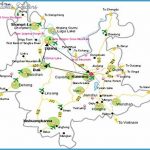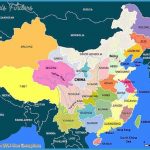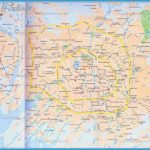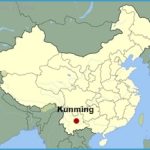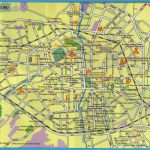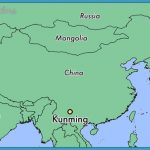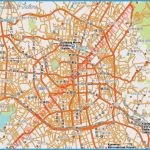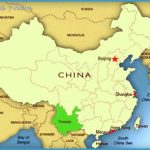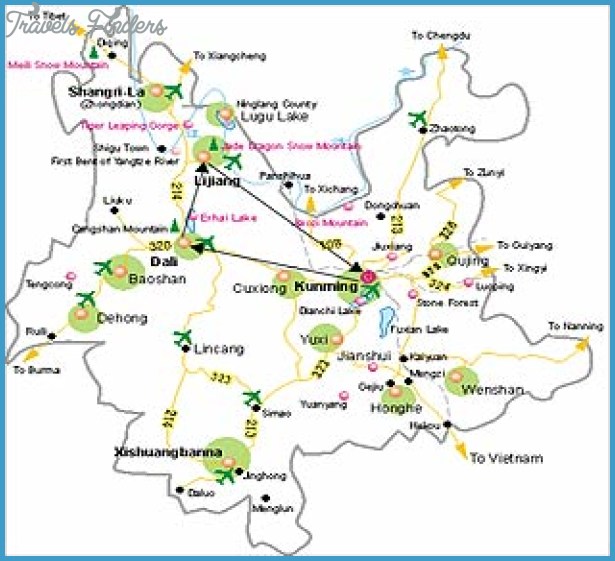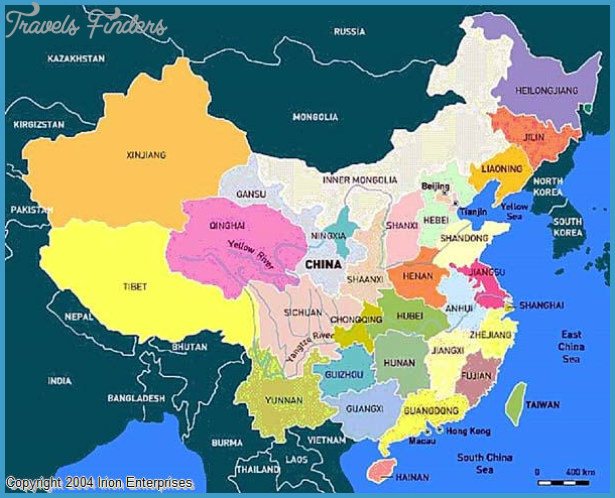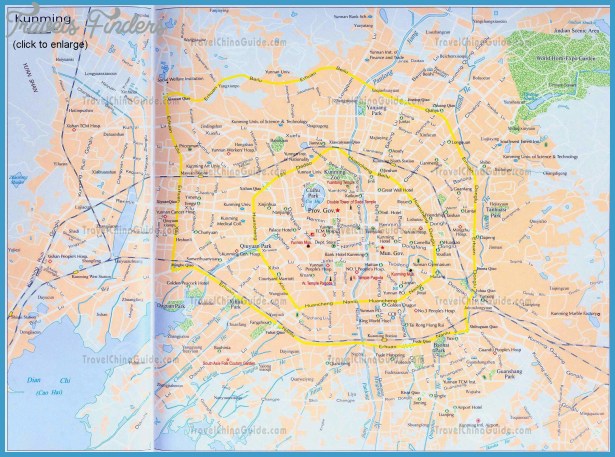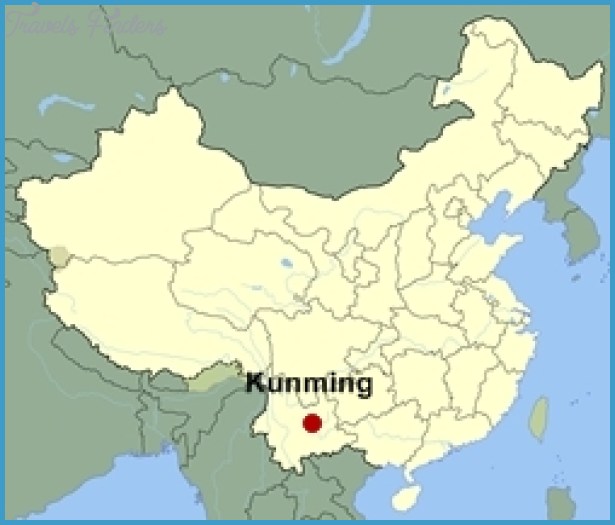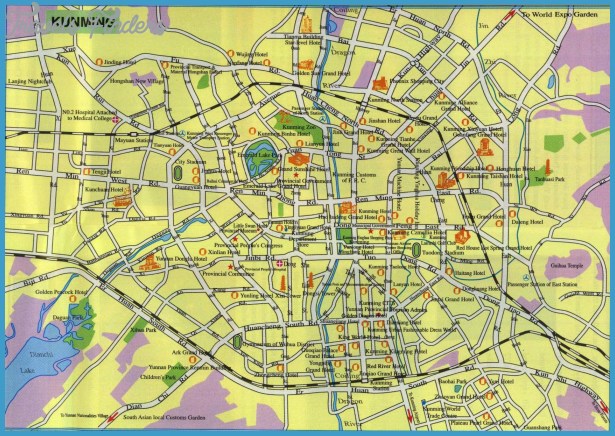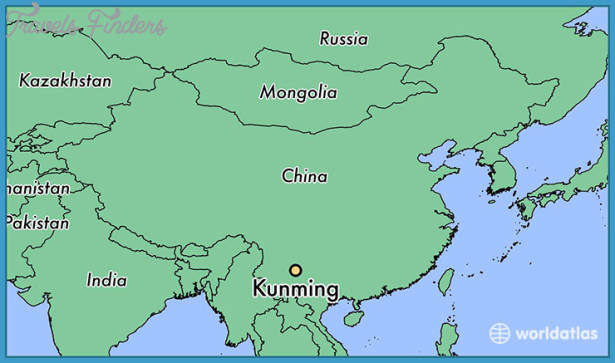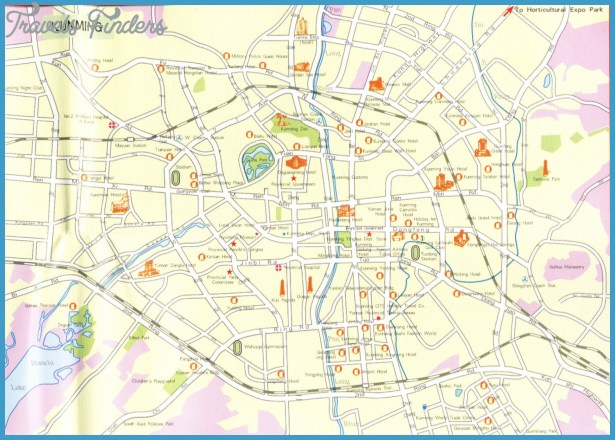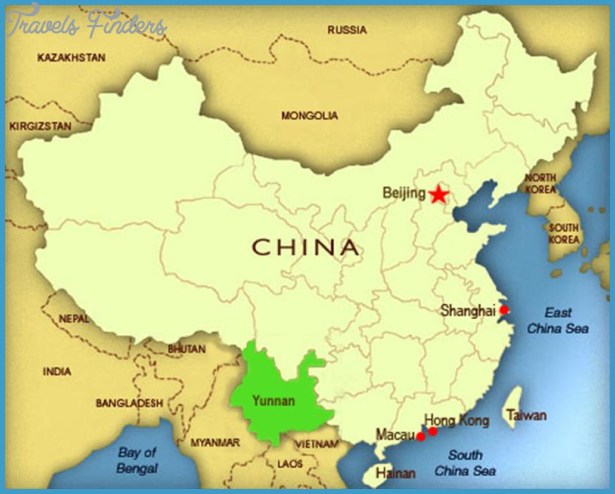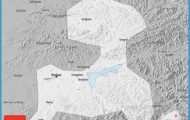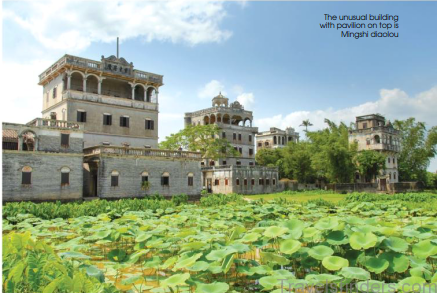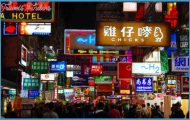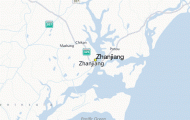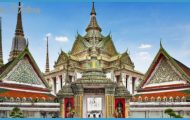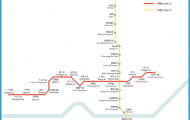Capital of Yunnan Province
Altitude: 1893m/6211ft. Area: 6235sq.km/2407sq. miles Population: 1,430,000 (conurbation 1,990,000)
Kunming lies at 102°43’E and 25°05’N, in the centre of the province of Yunnan on the northern shore of Lake Dianchi. There are flights to Kunming from Beijing, Shanghai, Chengdu, Canton, Xi’an and other Chinese cities, as well as from Hong Kong. Kunming can also be reached from Chengdu and Guiyang by rail.
Kunming is famed as the “City of Eternal Spring” because of its mild climate and lush vegetation although within the space of a single day it is possible for the city to experience considerable variations in temperature. The city is also the cultural capital ofthe province, possessing universities, colleges and an institute for minorities.
People of many different nationalities live together in the city, a fact immediately apparent just from external appearances. There is a wide range of handmade goods available, e.g. embroidered blouses and caps. A
Kunming Shopping centre in Kunming special attraction are the colourful markets, the parks and the beautiful wooden house-fronts, which give the city a rather provincial air.
In the 3rd c. b.c. General Zhuang Qiao retreated to the shores of Lake History Dianchi and founded the city of Kunming. Under the Tang dynasty (618-907) it had the role of a military base. A little later on it became the capital of the Nanshao Kingdom. Kunming developed into an important trading centre, supplying India, IndoChina, Burma and Sichuan. Marco Polo described it in 1287 as a “fine city” with inhabitants of many different races.
In addition he mentioned the wealth of its trading houses and its salt production. Around 1650 the last hereditary prince ofthe Ming dynasty sought refuge in Kunming and founded the Southern Ming kingdom, which was destroyed eleven years later by Qing troops. In 1855 the city started a rebellion against its foreign Manchurian rulers but it was brutally put down. After 1910, when the railway line to Haiphong (now Hanoi) was opened, Kunming developed into a modern city. At the time of the Japanese invasion a large number of factories and research establishments were transferred here, in order to save them from destruction. In the last forty years Kunming has experienced another enormous spurt of growth and become a major economic centre.
This museum, which was opened in Dongfeng Xilu in 1964, contains over Sights 50,000 exhibits, including valuable bronze implements belonging to the Provincial Museum national minorities. Jade Lake, into which nine springs feed, lies in the north-west of the city in Jade Lake the park of the same name. The late 17th c. Pavilion of the Green Waves (Cuihu) (Biyi Ting) stands on an island in the middle of the lake. Two dams dominate the lake: the one running in a north-south direction and crossed by three bridges is known as the Dyke of Governor Ruan (Ruan Di) and was Temple of Perfection and Success (Yuantong Si)
Pagoda of the West Temple, Pagoda ofthe East Temple erected towards the end of the 18th c. The other one, called Tang Dyke (Tang Di), was built in 1919 and runs east-west.
The Temple of Perfection and Success, situated in the north of the city and just to the south of the zoo of the same name, was built during the Tang period (618-907), rebuilt between 1301 and 1320, and subsequently restored on several occasions during the next few centuries. An octagonal pavilion situated in a square lake is of particular interest. In the main temple, the Hall of Perfection and Success (Yuantong Baodian), the visitor should look out for some 14th c. Buddhist statues and two Ming period (1368-1644) dragons made from coloured clay which are coiled around two pillars.
In the south of the city two pagodas rise up in close proximity to one another,the Pagoda ofthe West Temple (XisiTa) and the Pagoda ofthe East Temple (Dongsi Ta), both dating from the Tang period (618-907) and both having been faithfully rebuilt after the Muslim uprising of 1868.

